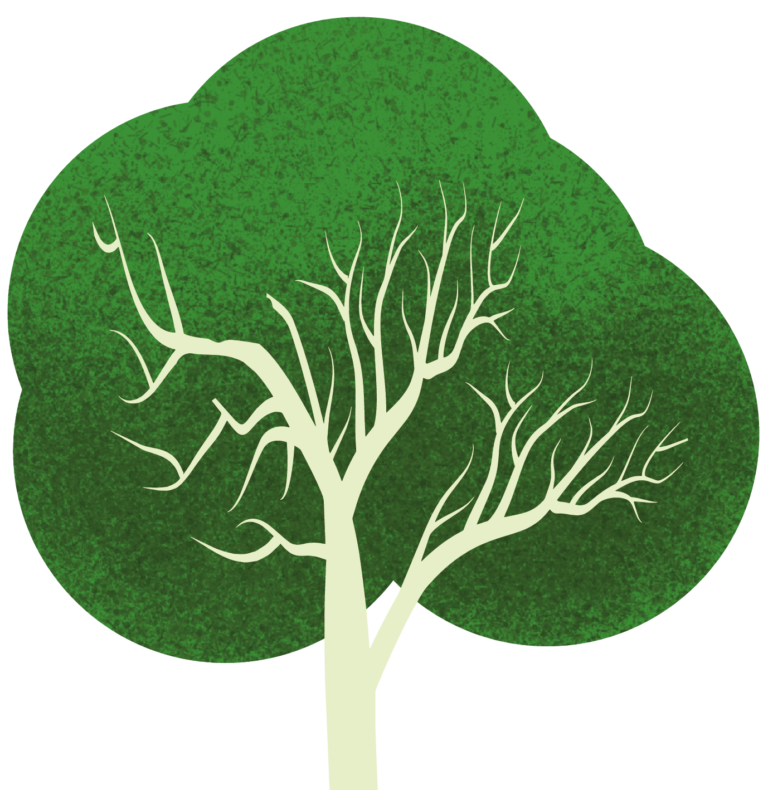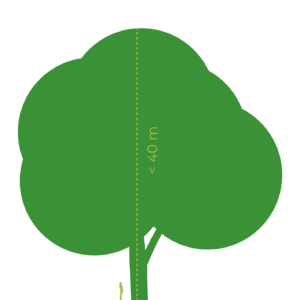Faix (Catalan) | Faia (Galician) | Faia (Portuguese) | Haya (Spanish) | Hêtre commun (French)
Fagus is the Roman name given to the beech tree, its fruit and wood; sylvatica meaning from the forests, or from the mountains.
The common beech, is one of the most widespread trees in Europe, found on the northern plains or at a height of 2000 m on mount Etna, places with the same climatic conditions: oceanic climate, with moderate temperature variations and abundant rainfall throughout the year.
It is a tree with a lifespan of close to 250 years, capable of reaching a height of between 35-40 m. With a straight, upright trunk it is without branches and an oval crown in the upper third of the tree. If it grows in the forest, it takes on a cylindrical shape, on the other hand, if growing in isolation or surrounded by younger trees, its shape is broadly conical, more open and irregular.
Its bark remains virtually smooth for the entire duration of its life, an ash grey or white colouring reminiscent of an elephant´s foot.
This tree requires fresh earth, well developed and with high humidity. It is indifferent to the soil type and grows from sea level up to 2000 m. The arrangement of its horizontal branches and its rapid growth favour the creation of mono-specific forests making it difficult for other species to thrive alongside them, apart from open clearings or forest edges, the exception would be the holly or yew trees that are capable of withstanding certain shady conditions.
Oaks, such as the Quercus robur, in the same ecological conditions succumb to the species, given that they are finally drowned by the shade from its rapid growth. In fact, some species associated with beech forests adopt a strategy of completing the major part of their life cycle before the beech tree leaves appear, that are usually late.
Below the canopy the drying leaves, fruit and branches accumulate, their slow decomposing containing compounds that inhibit the germination and growth of other plants, a phenomenon known as ´allelopathic effect´.
Beech wood is easy to carve, turn, polish and with hardly any internodes, this being one of the reasons for its extensive logging.
Furthermore, through distillation of creosote, an aromatic disinfectant compound from the wood as well as tar can be obtained from the wood, in itself also good for burning and producing charcoal.
Beech has a variety of uses that have changed over time. It was used for human consumption, in Pyrenean culture there is evidence of a Basque ´coca´ using certain hallucinogenic alkaloids found in the young leaves of the beech. Beech nuts were eaten like ´pipas´ (sunflower seed snack) as well the use of beechnut oil, a widely common practice.
Ander Manterola, a Basque ethnographer explained to Impredicible Basoa that both oak forests(haretx) and beech forests (Pago) were the source of fuel during the life of our ancestors in Basque Country Baso barik ez dago zurik. Surik ez dago egur barik’ : without the forest there is no fire. There is no fire without wood.
Furthermore, wood gathered from beech forests was used for the construction of houses and boats for shipyards. As a result, in the case of the common beech, a special felling technique was carried out that distorted the trees´ natural development, obtaining the wood without killing off the species.
To do this, charcoal burners made a cut or guide in the trunk of the tree, at a height above ground of 2 or 3 m, and at around 50 years old, from which small branches grew out of the cuts and pruned at approximately every 15 years. The pruned branches produced charcoal that was later used in the foundries. The trees grew in width rather than height with a large perimeter within the first three metres or so.
Nowadays, the practice has been abandoned and these beech trees produce several branches growing vertically, close to where the repeated scars from pruning were made, creating a distinct silhouette.
There are still traces of the so called transmocha (pruned) beeches all over the Basque country: Egilolarra and Oatzarreta in Gorbeialde, Gaztelumendi in Gipuzkoa…
The greatest expanse of Iberian beech forest is that of Irati, the largest continuous forest on the Iberian peninsula.







